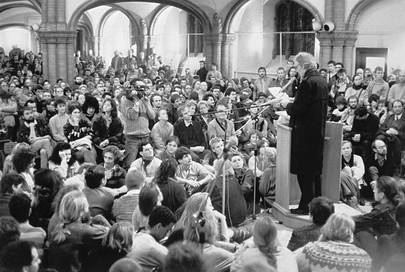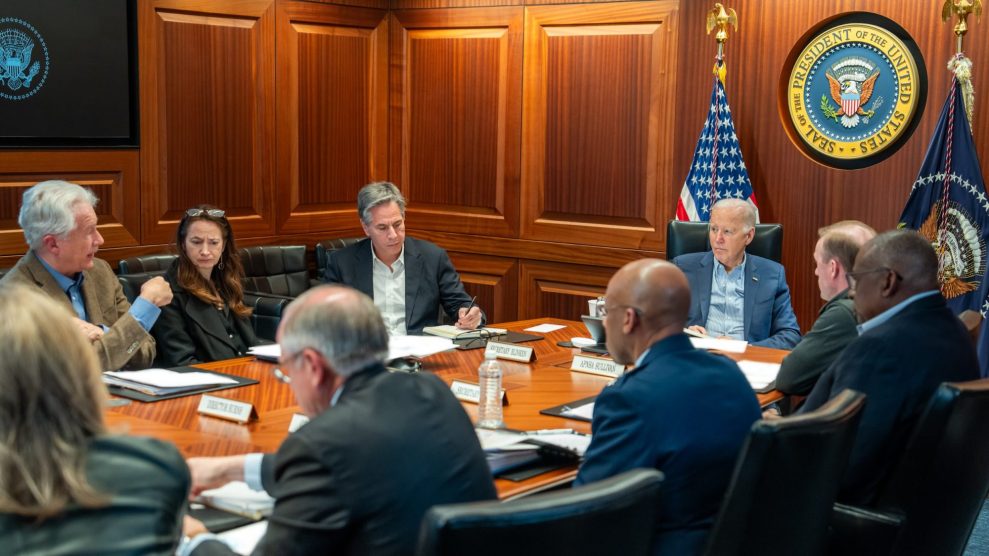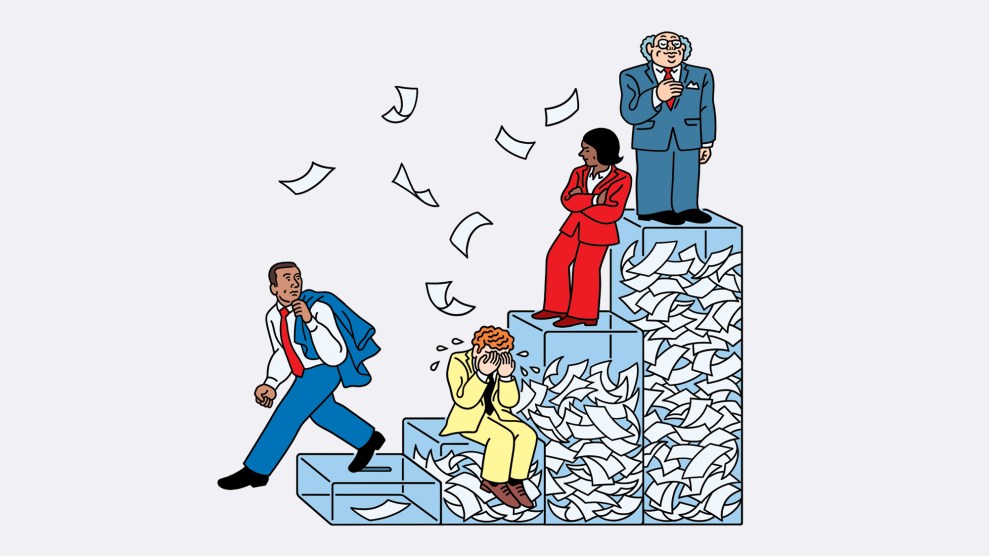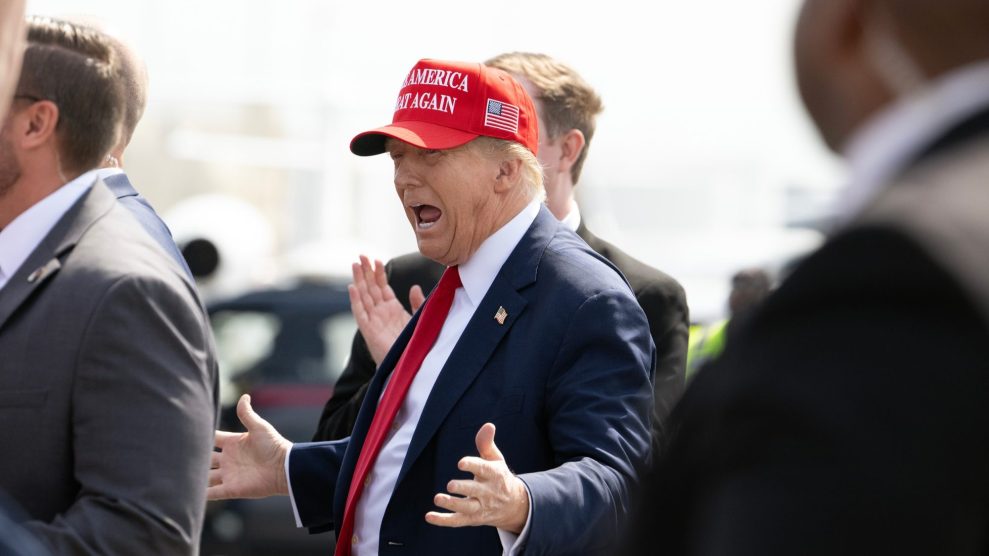In this week’s 20th anniversary celebrations of the “fall” of the Berlin Wall, two images predominate: First, Ronald Reagan stands before the Brandenburg Gate, intoning “Mr. Gorbachev, tear down this wall.” Next, throngs of jubilant Berliners stream through Checkpoint Charlie, while others clamber atop the Wall or hack at it with sledgehammers, often to the musical accompaniment of David Hasselhoff. Based on these images, you’d never guess that there were more than two years separating these two events–and you’d certainly never know how little they actually had to do with one another.
The mainstream media this week has been full of homages to what they call the ”speech that ended the Cold War.” Some news outlets–along with Angela Merkel and the German people themselves–have had the decency to acknowledge that Mikhail Gorbachev had something to do with it, as well. Either way, most accounts attribute the destruction of the Wall to actions and policies that came from the top, from the leaders of the two great Cold War powers. Largely forgotten or ignored are the ordinary citizens who for years had gathered in the churches of the GDR, placing themselves at great personal risk as they peacefully and persistently worked for change.
I caught a glimpse of this grassroots movement when I went to East Berlin in the first days of October 1989, a month before the Wall was breached. Along with Sylvia Plachy, the photographer, and Bettina Muller, a young West German journalist, I was ostensibly covering the 4oth anniversary of the GDR; actually, we were there to cover the growing pro-democracy movement. For the better part of the decade, dissidents had been meeting in protestant churches in Leipzig and Dresden, as well as in Berlin–initially to protest the arms race, and later to advocate for political reform. These churches were tolerated by the government and allowed to provide a protective cover for the opposition–although, like everything else in the GDR, they were closely monitored by the Stasi.
By the fall of 1989, the movement’s numbers had swelled, and there was a sense of excitement, but also one of fear: East German leader Erich Honecker was a hard-liner with no interest in perestroika. Some movement leaders had been arrested, and after the carnage in Tiananmen Square a few months earlier, there were worries that the government would choose a “Chinese solution” to the growing protests in the GDR.
I remember a cold, damp October afternoon when my colleagues and I tried to make contact with someone who had offered to direct us to a meeting of the pro-democracy activists. Entering a small square, we cast a quick look around and saw that at every corner there was a Trabant, the boxy little East German car, each with two men sitting in the front seats. All the cars seemed to be red: This was the Stasi, and they had no need to hide their presence.
We turned up a sidestreet and went halfway up the block to an address we had been given, the office of an environmental book store. But the windows were shuttered, the door padlocked shut. As we retreated down the block, we passed a young couple, bundled up against the raw cold. They nodded, and walked straight past us. Their clothing was plain and worn and, like everything else in East Berlin, drab. But on the girl’s coat collar, tucked almost out of sight, was a little pin. “That’s it,” Bettina whispered. “They’re here.”
Keeping an eye on the Stasi vehicles, we watched as the couple crossed the square and disappeared into the door of a nondescript building. We followed, and found ourselves in a small café with a dozen or so people. Noone talked much. They seemed to be waiting. Here and there among them we saw the little pin. Soon, paying no heed to us, they began to drift out in ones and twos.
Bettina had spoken briefly with a young man who gave her another address. We now doubled back out, got into a half-empty metro, went a couple of stops, and crossed another square to a large church built of red stone, with a parish hall next door. It was beginning to get dark, and lights shone through the windows. Outside, all around the building, were little red Trabants.
We had found our way to the Erloeserkirche, or Church of the Redeemer, where that evening thousands of people had gathered by candlelight. Some represented various pro-democracy groups, who were drafting a joint declaration laying out the terms of a new society in East Germany, with free speech and free elections. (Capitalism, at least then, wasn’t on their agenda.) Many others had come to Berlin from deep in the east to catch a glimpse of Gorbachev, who was about to arrive in the city to celebrate the GDR’s anniversary. They wore–timidly at first, then proudly–their little perestroika pins, proud emblems of what seemed to be a peaceful revolution.
I couldn’t understand what was being said, so I watched the crowd; they listened quietly and seriously, but the air buzzed with subdued energy. When the meeting came to an end, we followed the crowd outside. Suddenly, the doors of the little red cars slammed shut. Their engines turned over. The men inside glared out as they began to follow their targets off into the night.
If this all sounds too much like a John Le Carre story, it’s because things really were like that in East Berlin, right up to the end. While there was some sense that things were changing, my colleagues and I didn’t know that we were witnessing the run-up to a cataclysmic transformation in global politics. Neither, I think, did most of the people inside the church. But that week, churches in Berlin, Leipzig, and elsewhere would become the site of mass demonstrations and mass arrests. Another week more and Honecker would resign. In a month, half a million people would demonstrate in East Berlin’s Alexanderplatz; a few days after that, the Wall would be breached.
The members of pro-democracy movement who gathered in those churches invoked the name of Dietrich Bonhoeffer, the Lutheran pastor who opposed Hitler and was executed by the Third Reich; they paid homage to Martin Luther King, Jr., who launched a liberation movement from his pulpit in Atlanta. They cheered on Gorbachev, whom they saw as emboldening their revolt, and they were hungry for news of dissdents in other parts of Eastern Europe. But not once did I hear any of them mention Ronald Reagan.
Although it may be lost in the bombastic rhetoric of Western, especially American, self-glorification, the fact is that the fall of the Berlin Wall–and in fact, our so-called victory in the Cold War–had almost nothing to do with us. It didn’t result from the billions the United States spent on nuclear arms, or the thousands of spies we deployed (none of whom, by the way, saw this coming). It did owe some debt to the maverick Soviet premier who created a window of opportunity. But in the end, it was down to people like these unassuming young East Berliners, who braved a 40-year habit of repression and a fleet of little red cars to gather in a church on a raw October evening.
(For those interested in this history, I recommend this piece by Andrew Curry in the Wilson Quarterly.)
This post also appears on James Ridgeway’s blog, Unsilent Generation.

Gethsemanekirche, East Berlin, October 1989.

Alexanderplatz, East Berlin, November 1989.
Photos from Friedlich Revolution 1989 / 1990.















